 Hey everyone -- just waiting a few minutes for Shahriar to log on
Hey everyone -- just waiting a few minutes for Shahriar to log on
 I am here!
I am here!
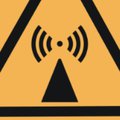 WooHoo!
WooHoo!
 Do you see my messages Dan? :)
Do you see my messages Dan? :)
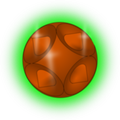 Hey hey @The Signal Path
Hey hey @The Signal Path
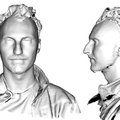 Hey there everyone
Hey there everyone
 There we go, sorry I missed your login. So here we go on the final Hack Chat of 2019, and I'm really excited that Shahriar is joining us.
There we go, sorry I missed your login. So here we go on the final Hack Chat of 2019, and I'm really excited that Shahriar is joining us.
 Saving the best for last
Saving the best for last
 Second that.
Second that.
 Thanks Dan for the invite and everyone else for being here.
Thanks Dan for the invite and everyone else for being here.
 I love watching his videos on The Signal Path, and he's here today to talk about the weird world of microwave electronics.
I love watching his videos on The Signal Path, and he's here today to talk about the weird world of microwave electronics.
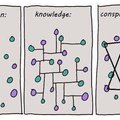

 Hi. Huge fan of The Signal Path. Was just playing with a diy diode ring mixer this evening :)
Hi. Huge fan of The Signal Path. Was just playing with a diy diode ring mixer this evening :)
 Hi
Hi
Thanks @The Signal Path for your videos. They gave me a lot of knowledge and motivation to start with microwave electronics. I did already some experiments and surprisingly microwaves seem to me to be something actually possible to learn :D
Here is my current project: https://hackaday.io/project/168985-microwave-synthesizer-4-7ghz
 huge fan here, as well!
huge fan here, as well!
 Sounds exciting!
Sounds exciting!
 A little about myself, I am the Director of mm-Wave ASIC research as Bell Labs. Most of our work is focused on the design of next generation ASICs for communication systems; that includes both wireless and optical systems. We do ASIC, packaging and antenna design up to about 200GHz. I am also an adjunct professor at Columbia University in NYC where I teach one course a year. Finally, I am the host and founder of The Signal Path! A video blog focused on advanced electrical engineering topics. I do equipment reviews, repairs, tutorials across a wide range of applications. (www.YouTube.com/TheSignalPath)
A little about myself, I am the Director of mm-Wave ASIC research as Bell Labs. Most of our work is focused on the design of next generation ASICs for communication systems; that includes both wireless and optical systems. We do ASIC, packaging and antenna design up to about 200GHz. I am also an adjunct professor at Columbia University in NYC where I teach one course a year. Finally, I am the host and founder of The Signal Path! A video blog focused on advanced electrical engineering topics. I do equipment reviews, repairs, tutorials across a wide range of applications. (www.YouTube.com/TheSignalPath)
 Wish I had the kit for mm wave but building up from VHF slowly
Wish I had the kit for mm wave but building up from VHF slowly
 Shahriar, Microwave equipment is expensive and covered by black magic and dragons : ) Osmocom guys revolutionized RF reception from ~`24 to 1.7/ 2.2Ghz for Sub 10 euros + antenna. My question is how we can easily reach Ka-Band ~`20Ghz frequencies : )
Shahriar, Microwave equipment is expensive and covered by black magic and dragons : ) Osmocom guys revolutionized RF reception from ~`24 to 1.7/ 2.2Ghz for Sub 10 euros + antenna. My question is how we can easily reach Ka-Band ~`20Ghz frequencies : )
 i.e. no saphirre substrates
i.e. no saphirre substrates
 @BSA Secure Well, it all depends on what you want to do at those frequencies. Simple detection is easy.
@BSA Secure Well, it all depends on what you want to do at those frequencies. Simple detection is easy.
 What I think might happen is that we will see more and more external mixers/converters that can interface with lower frequency instruments.
What I think might happen is that we will see more and more external mixers/converters that can interface with lower frequency instruments.
 There are no TV-LNB's for ka band (small exceptions), there are Speed Cam radar detectors that gets to Ka-band. But, my question is how we can RX it for cheap on desk environment
There are no TV-LNB's for ka band (small exceptions), there are Speed Cam radar detectors that gets to Ka-band. But, my question is how we can RX it for cheap on desk environment
 This will allow you to observe and generate a lot of things at much lower cost.
This will allow you to observe and generate a lot of things at much lower cost.
 Awesome!, wow that's almost into the Terahertz range... or I guess can be considered Terahertz. Amazing how there are solid state Terahertz systems now... or being a newbie to the electronics side of the systems... aware of.
Awesome!, wow that's almost into the Terahertz range... or I guess can be considered Terahertz. Amazing how there are solid state Terahertz systems now... or being a newbie to the electronics side of the systems... aware of.
 @BSA Secure That might be a good video topic, for me to show some cheap way of interfacing to lower-frequency instruments.
@BSA Secure That might be a good video topic, for me to show some cheap way of interfacing to lower-frequency instruments.
 For 10-20-30 euros you can buy Ka band Transmitter / Receiver (Geostationary, rural internet by ViaSat)- this transmitter is quire smart so you can control it via OOK/ASK packets : ) Simply up/down converter with Telemetry/Control Channel
For 10-20-30 euros you can buy Ka band Transmitter / Receiver (Geostationary, rural internet by ViaSat)- this transmitter is quire smart so you can control it via OOK/ASK packets : ) Simply up/down converter with Telemetry/Control Channel
 Solid-state electronics can go to THz. Not in Silicon currently, but in InP for sure.
Solid-state electronics can go to THz. Not in Silicon currently, but in InP for sure.
 I always appreciate any videos in the low(er) cost instrument sides of things
I always appreciate any videos in the low(er) cost instrument sides of things
 @Chris Gammell I try to balance things out. My next video I am working on is a tutorial.
@Chris Gammell I try to balance things out. My next video I am working on is a tutorial.
 Of course. No worries, I love it all :-)
Of course. No worries, I love it all :-)
 Downconverting, cost effectively, the GHz range is an excellent topic I'd love to see more of.
Downconverting, cost effectively, the GHz range is an excellent topic I'd love to see more of.
 Whats the coolest thing you’ve ever built @The Signal Path
Whats the coolest thing you’ve ever built @The Signal Path
![]() Has Bell Labs developed any device for non-contact vital sign detection with mmWave?
Has Bell Labs developed any device for non-contact vital sign detection with mmWave?
 You can always down convert with a cheap LNB for satellite TV, radio HAMs use that often
You can always down convert with a cheap LNB for satellite TV, radio HAMs use that often
 Probably our 384-Element phased array at Bell Labs! It puts out 60dBm of EIRP at 90GHz!
Probably our 384-Element phased array at Bell Labs! It puts out 60dBm of EIRP at 90GHz!
 @JMGarofalo - paging Dr. McCoy?
@JMGarofalo - paging Dr. McCoy?
![]() That's awesome! How large is it?
That's awesome! How large is it?
 What application is at 90GHz?
What application is at 90GHz?
 @JMGarofalo I think there are some interesting ultra sonic DIY projects for this
@JMGarofalo I think there are some interesting ultra sonic DIY projects for this
 @JMGarofalo Non-contact vital sign detection has been going around for a while. Certainly possible but the challenge is mostly on signal processing. Lot of junk is in the signal and to extract the part you want is not easy. Machine learning is a good area for this kind of work currently.
@JMGarofalo Non-contact vital sign detection has been going around for a while. Certainly possible but the challenge is mostly on signal processing. Lot of junk is in the signal and to extract the part you want is not easy. Machine learning is a good area for this kind of work currently.
 How much of your work is spent in simulation and do you have any recommended steps for approaching the problem when your test circuit doesn't match simulation in mm frequencies?
How much of your work is spent in simulation and do you have any recommended steps for approaching the problem when your test circuit doesn't match simulation in mm frequencies?
 @JMGarofalo - mmwave vital sign detection sounds like the med scanners on Star Trek
@JMGarofalo - mmwave vital sign detection sounds like the med scanners on Star Trek
 @home The size is very small, because it is at 90GHz. It active area fits in the palm of your hand.
@home The size is very small, because it is at 90GHz. It active area fits in the palm of your hand.
![]() @The Signal Path Yea. I am currently working on this for a university design project!
@The Signal Path Yea. I am currently working on this for a university design project!
![]() I've been experimenting with 122GHz radar chips, fun stuff.
I've been experimenting with 122GHz radar chips, fun stuff.
 @Ethan Waldo Most of my work these days in architecture design. I have a team of talented ASIC and packaging researchers that I work with.
@Ethan Waldo Most of my work these days in architecture design. I have a team of talented ASIC and packaging researchers that I work with.
 @JMGarofalo Sounds exciting! What frequency?
@JMGarofalo Sounds exciting! What frequency?
 @home Whose radar chipset is this? Infineon? Boch?
@home Whose radar chipset is this? Infineon? Boch?
![]() Our goal is to be able to detect respiration and heart rate through a barrier as in the event of a natural disaster.
Our goal is to be able to detect respiration and heart rate through a barrier as in the event of a natural disaster.
![]() mmWave range is something of an issue
mmWave range is something of an issue
 From what I recall regarding the TEMPEST systems... the price for those systems were (and I'm guessing is still) rather high. Would be interesting to see more the DSP SDR methods not necessarily for remote sensing communications systems... though for vital signs and even diagnostics Seems the AI future for a more valid diagnostics and even for therapeutics. We are electrophysiological signals too of course.
From what I recall regarding the TEMPEST systems... the price for those systems were (and I'm guessing is still) rather high. Would be interesting to see more the DSP SDR methods not necessarily for remote sensing communications systems... though for vital signs and even diagnostics Seems the AI future for a more valid diagnostics and even for therapeutics. We are electrophysiological signals too of course.
 @JMGarofalo Yes, that will always be an issue. This is one of the primary reason why phased arrays are used.
@JMGarofalo Yes, that will always be an issue. This is one of the primary reason why phased arrays are used.
![]() @signalpath Silicon Radar TRA_120_002
@signalpath Silicon Radar TRA_120_002
![]() We decided to work in the ISM band, our client wasn't super plussed about mmWave
We decided to work in the ISM band, our client wasn't super plussed about mmWave
 @home Nice, I see it has antenna in package as well. Looks fun!
@home Nice, I see it has antenna in package as well. Looks fun!
 @home Very simple radar architecture.
@home Very simple radar architecture.
![]() @signalpath So far! Signals across my backyard (100 feet)
@signalpath So far! Signals across my backyard (100 feet)
 When is the next video?
When is the next video?
![]() I'm a Ham so it's a legal frequency for us, working on a feedhorn now.
I'm a Ham so it's a legal frequency for us, working on a feedhorn now.
 @Colin Alston Trying to finish it soon. Tutorials take the longest actually, because it covers theory, experiments, etc. It has to be fairly polished and resemble a university lecture.\
@Colin Alston Trying to finish it soon. Tutorials take the longest actually, because it covers theory, experiments, etc. It has to be fairly polished and resemble a university lecture.\
 @JMGarofalo What frequency(ies) or range are you planning to use.
@JMGarofalo What frequency(ies) or range are you planning to use.
![]() Good evening from Germany,
Good evening from Germany,
![]() @James Finch 2.4Ghz-2.5GHz
@James Finch 2.4Ghz-2.5GHz
 Why does it need to be polished? You should do some more adhoc videos, see your cat messing up your calibration
Why does it need to be polished? You should do some more adhoc videos, see your cat messing up your calibration
![]() @James Finch I pushed for 70-80 GHz but we figured it would be too difficult to extend the range
@James Finch I pushed for 70-80 GHz but we figured it would be too difficult to extend the range
 Neat... would be interesting being able to hack a COTS device to use. I'm not sure I've read about anyone doing so yet regarding.
Neat... would be interesting being able to hack a COTS device to use. I'm not sure I've read about anyone doing so yet regarding.
 @Colin Alston Haha... It is not that polished. :)
@Colin Alston Haha... It is not that polished. :)
 2.4 GHz is 12 cm wavelength, wouldn't it be difficult to detect life signs with that coarse waves?
2.4 GHz is 12 cm wavelength, wouldn't it be difficult to detect life signs with that coarse waves?
![]() @James Finch I guess you could, but it would probably be cheaper to start from scratch.
@James Finch I guess you could, but it would probably be cheaper to start from scratch.
 @James Finch This radar chip is very simple... There isn't much to hack anyway.
@James Finch This radar chip is very simple... There isn't much to hack anyway.
![]() @Frank Buss Well, lower frequencies tend to have higher penetration, and its a simple doppler FMCW concept
@Frank Buss Well, lower frequencies tend to have higher penetration, and its a simple doppler FMCW concept
 @JMGarofalo et.al, makes sense.
@JMGarofalo et.al, makes sense.
 Just came across https://groups.io/g/VK2-Microwave-Users-Group/attachment/213/0/55%20122%20GHz%20Transceiver%20K6ML.pdf
Just came across https://groups.io/g/VK2-Microwave-Users-Group/attachment/213/0/55%20122%20GHz%20Transceiver%20K6ML.pdf
 I know that people were buying military comm X-band k Ka etc from ebay. But I was really looking to existing systems like internet over satellite to bring down 30Ghz to 10-20 euros investment as this equipment is mass produces
I know that people were buying military comm X-band k Ka etc from ebay. But I was really looking to existing systems like internet over satellite to bring down 30Ghz to 10-20 euros investment as this equipment is mass produces

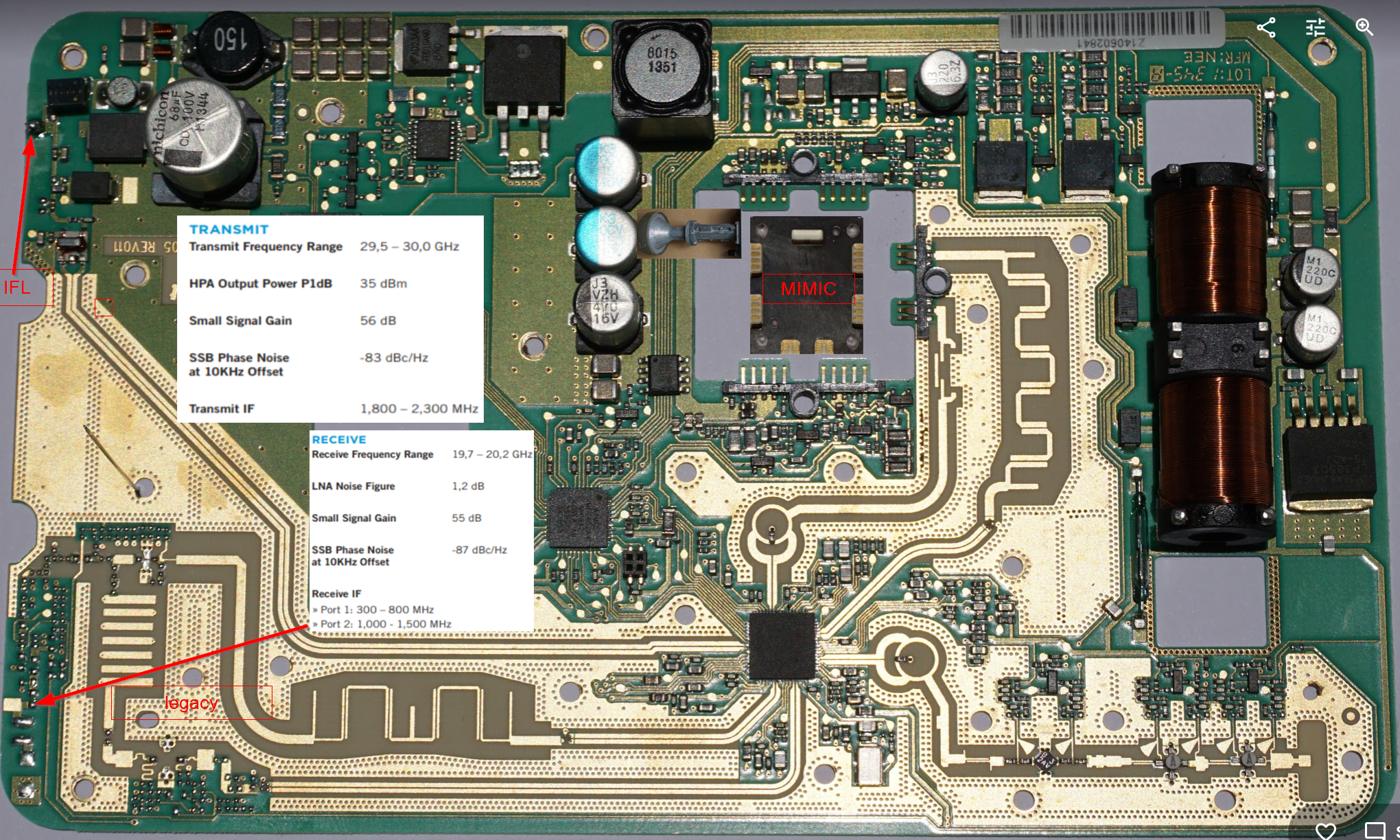
 Hello @The Signal Path , Love your videos and the way you explain,keep it up :) I have a question, i'am an electronic engineering student, as far as i know my school focuses a lot on integrated analog design, in your experience, there are some specific topics or general areas of electronics you think an integrated circuit designer should know? i know it is a kind of broad question, but i really don't know how to put it more specific
Hello @The Signal Path , Love your videos and the way you explain,keep it up :) I have a question, i'am an electronic engineering student, as far as i know my school focuses a lot on integrated analog design, in your experience, there are some specific topics or general areas of electronics you think an integrated circuit designer should know? i know it is a kind of broad question, but i really don't know how to put it more specific
 @The Signal Path Which radar chip?
@The Signal Path Which radar chip?
 @jmgar81 ok, but I guess needs a very high resolution for the doppler effect for detecting the slow life movements
@jmgar81 ok, but I guess needs a very high resolution for the doppler effect for detecting the slow life movements
 Do any of you use mica in your projects?
Do any of you use mica in your projects?
![]() @Ethan Waldo - Exciting implementation, I have one on order.
@Ethan Waldo - Exciting implementation, I have one on order.
 LNA noise-figure of 1.2dB at 20GHz. ;)
LNA noise-figure of 1.2dB at 20GHz. ;)
 I was thinking an S band or general application... like maybe something Doppler Radar related stock.
I was thinking an S band or general application... like maybe something Doppler Radar related stock.
 I've been using some mica for one of mine (optical) and laser cutting it with ease, seems like you could easily print a circuit on it too. Might be an ideal substrate for an RF circuit?
I've been using some mica for one of mine (optical) and laser cutting it with ease, seems like you could easily print a circuit on it too. Might be an ideal substrate for an RF circuit?
![]() @Ethan Waldo Met him at Microwave Update this fall
@Ethan Waldo Met him at Microwave Update this fall
 @BarceP If I were to give you one advice, it would be to be multi-disciplinary. The wider your understanding of complex systems the better. As an electrical engineer you should know how the full system works, you should also know programming. Otherwise you can get stuck in a corner doing the same thing over and over again.
@BarceP If I were to give you one advice, it would be to be multi-disciplinary. The wider your understanding of complex systems the better. As an electrical engineer you should know how the full system works, you should also know programming. Otherwise you can get stuck in a corner doing the same thing over and over again.
 Now with the 5G devices roll out, make me wonder and want to look to see what is on the market now more cost effectively to work with.
Now with the 5G devices roll out, make me wonder and want to look to see what is on the market now more cost effectively to work with.
 @David Troetschel No MICA at the moment. But we use several other types of material for packaging and antenna design.
@David Troetschel No MICA at the moment. But we use several other types of material for packaging and antenna design.
![]() You mentioned, that it helps your channel to let manufacturers know, that people saw measuring equipment on your YouTube channel. Do you think it helps if I tell the manufacturers at the EmbeddedWorld fair in February that I saw the one or other device on your channel already without buying something?
You mentioned, that it helps your channel to let manufacturers know, that people saw measuring equipment on your YouTube channel. Do you think it helps if I tell the manufacturers at the EmbeddedWorld fair in February that I saw the one or other device on your channel already without buying something?
 @home Nice. I'd imaging he's involved in UKMicrosaves@groups.io. Are you allowed to say rough price or PM me?
@home Nice. I'd imaging he's involved in UKMicrosaves@groups.io. Are you allowed to say rough price or PM me?
 @David Troetschel I don't know the dielectric properties of MICA on top of my head, would have to check it out.
@David Troetschel I don't know the dielectric properties of MICA on top of my head, would have to check it out.
 s/os/ow
s/os/ow
 @The Signal Path might be worth looking into, it can also serve as a microwave wave-guide. They use it in insulators often
@The Signal Path might be worth looking into, it can also serve as a microwave wave-guide. They use it in insulators often
 @s3sebastian Sure, of course it is always helpful to spread the word. :) Thanks!
@s3sebastian Sure, of course it is always helpful to spread the word. :) Thanks!
 @David Troetschel It would have to compete with state-of-the-art organic PCB material for example to be viable. Both from cost and performance.
@David Troetschel It would have to compete with state-of-the-art organic PCB material for example to be viable. Both from cost and performance.
 I have done several videos Radar related... Might do more with my W-Band setup.
I have done several videos Radar related... Might do more with my W-Band setup.
![]() @Ethan Waldo - Sorry, I had the wrong system. K6ML system is still in development, I ordered the VK2 system - it was about $300.
@Ethan Waldo - Sorry, I had the wrong system. K6ML system is still in development, I ordered the VK2 system - it was about $300.
 Any guesses what the next tutorial will be about? ;)
Any guesses what the next tutorial will be about? ;)
 I've seen some folks DIYing alumina substrates
I've seen some folks DIYing alumina substrates
 @Ethan Waldo Yes, alumina is more common.
@Ethan Waldo Yes, alumina is more common.
 I recall the solid state THz system using organic materials, maybe crystals for their devices. I think that was the French company.
I recall the solid state THz system using organic materials, maybe crystals for their devices. I think that was the French company.
 @The Signal Path https://www.emsdiasum.com/microscopy/products/preparation/mica.aspx a 50x75mm sheet of laboratory grade can be as low as a couple bucks.
@The Signal Path https://www.emsdiasum.com/microscopy/products/preparation/mica.aspx a 50x75mm sheet of laboratory grade can be as low as a couple bucks.

 Lutetium
Lutetium
Discussions
Become a Hackaday.io Member
Create an account to leave a comment. Already have an account? Log In.